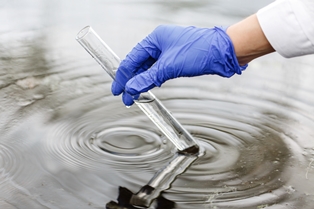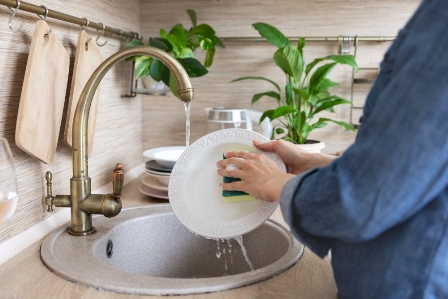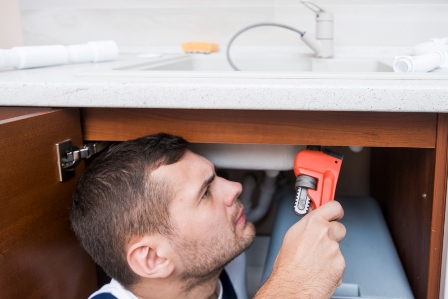In our daily routines, we often encounter situations where we need to dispose of dirty water. Whether it’s from washing dishes, mopping floors, or other household chores, the temptation to simply pour it down the drain or onto the ground can be strong. However, this seemingly innocuous act can have significant environmental consequences that are often overlooked. In this article, we’ll explore why responsible disposal of dirty water is crucial and offer some eco-friendly alternatives.
- First and foremost, pouring dirty water directly into the environment can introduce harmful contaminants into soil and water sources. This contamination can have detrimental effects on plant and animal life, disrupting ecosystems and even posing risks to human health if the contaminated water finds its way into drinking water supplies. Chemicals from detergents, oils, and other pollutants commonly found in household wastewater can accumulate over time, causing long-lasting damage to the environment.
- Furthermore, pouring dirty water onto the ground can contribute to soil erosion and nutrient depletion. The excess water can wash away topsoil, which is essential for plant growth, and carry valuable nutrients downstream, impacting the health of aquatic ecosystems. This loss of soil fertility can have far-reaching consequences for agriculture and food security, as well as exacerbate issues such as flooding and sedimentation.
- In addition to environmental concerns, irresponsible disposal of dirty water can also violate local regulations and ordinances. Many municipalities have strict guidelines governing the proper disposal of wastewater to protect public health and the environment. Pouring dirty water indiscriminately may result in fines or other penalties, further underscoring the importance of adhering to responsible disposal practices.
- So, what can we do to dispose of dirty water in a more environmentally friendly manner? One option is to utilize filtration systems or natural filtration methods to remove contaminants before releasing the water back into the environment. This can involve using specialized equipment such as sediment filters or constructing rain gardens and bioswales to naturally filter and absorb pollutants.
- Another approach is to reuse greywater whenever possible. Greywater refers to wastewater generated from activities such as bathing, laundry, and dishwashing that can be treated and reused for non-potable purposes such as irrigation or toilet flushing. By implementing greywater recycling systems in our homes and businesses, we can reduce the strain on freshwater resources and minimize the need to dispose of dirty water altogether.
- Composting organic matter is yet another sustainable alternative for managing dirty water. Instead of pouring leftover cooking water or food scraps down the drain, consider composting them to create nutrient-rich soil amendments for gardening and landscaping. This not only diverts waste from landfills but also helps to replenish soil fertility in a natural and eco-friendly way.
FAQs About Dispose of dirty water by pouring it
A: In most cases, it is generally acceptable to pour small amounts of relatively clean or mildly dirty water, such as leftover drinking water or water used for rinsing, down the toilet. However, pouring large amounts of heavily contaminated water, such as dirty mop water or wastewater containing chemicals or pollutants, should be avoided. Doing so can strain sewage systems, potentially causing blockages or contaminating water treatment facilities. It’s always best to check local regulations and guidelines regarding proper disposal of wastewater to ensure compliance with environmental standards.
A: There are several environmentally responsible ways to dispose of dirty mop water. One option is to pour it down a floor drain equipped with a strainer or filter to prevent large debris from entering the sewage system. Alternatively, you can empty the dirty water into a designated outdoor area, such as a designated drain or a permeable surface like gravel or soil, where it can naturally infiltrate and be absorbed by the ground. It’s essential to avoid dumping mop water directly onto vegetation or into bodies of water, as it may contain harmful chemicals or contaminants that can harm plant and aquatic life.
A: Dumping mop water directly into the sink is not recommended, especially if the water is heavily soiled or contains chemicals or pollutants. Doing so can clog drains, contaminate plumbing systems, and potentially harm the environment. Instead, consider using a floor drain or designated outdoor area for disposing of dirty mop water. If you must pour small amounts of relatively clean water down the sink, ensure that it won’t cause any adverse effects on your plumbing or the environment.
A: Garbage containers and mops should be washed at a designated utility sink or mop sink separate from sinks used for food preparation or handwashing. Washing these items in a dedicated sink helps prevent cross-contamination between food-contact surfaces and non-food items, reducing the risk of foodborne illness. It’s essential to clean and sanitize garbage containers and mops regularly to maintain a hygienic environment and comply with health and safety regulations.
Conclusion
The simple act of pouring dirty water may seem inconsequential, but its cumulative effects on the environment can be significant. By adopting responsible disposal practices and exploring alternative methods such as filtration, greywater recycling, and composting, we can minimize pollution, conserve valuable resources, and contribute to a healthier planet for future generations. It’s time to rethink how we handle dirty water and make more sustainable choices in our daily lives.










Find Us on Socials